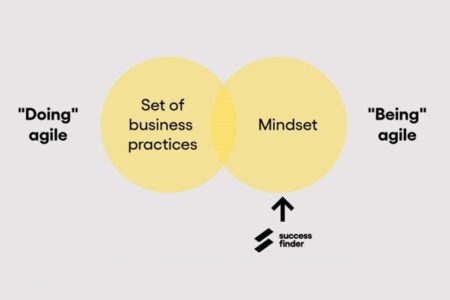The Agile methodology is well known today as a means for businesses to adapt to a commercial reality that has become increasingly volatile, uncertain, complex, and ambiguous (VUCA). Based on notions of goal-oriented flexibility, cross-functional collaboration, and iterative development, its practices and principles have been changing the way organisations operate since the turn of the millennium, gaining popularity in more and more industries. What was once thought of as a niche approach in tech circles has become the go-to solution for businesses looking to thrive in today’s everchanging environment.
In keeping with its core tenet of adaptability, the Agile methodology has evolved quite a bit in the last two decades. Just as businesses have had to change with the times, so to has the way they view and implement Agility. According to Jean-René Rousseau, Vice-President of Consulting in Business Agility at CGI, Agile hit the world in three waves, each representative of the way our work culture has transformed over the years.
1. Wave one: Agile Team
Though the Agile manifesto wasn’t published until 2001, a number of innovative software development approaches from the 1990s are considered Agile methods today because of their opposition to the overregulated “Waterfall” practices of the time. By the mid 2000s, the Agile methodology had become more mainstream, but Rousseau notes that its adoption was still limited to the management of tech departments. The goal, during this first wave, was to put together a small team that could develop, through Agile practices, more adapted software with faster turnarounds.
“At the time, we’d speak of a first wave of Agility. It was the Agile Team. We’d work on Agile projects, mostly Web projects […] We started digitizing certain applications, certain processes,” recalls Rousseau, who began working on his first Agile projects back in 2003. “The first wave of Agility was very IT, software development. It was more organic, as I mentioned. Back then, my mandates never involved the HR department. We did our thing [implementing Agile practices] in software development.”

2. Wave two: Agile at Scale
By 2010, a consensus had been reached among Agile leaders and experts as to what constitutes effective team practices, leading to the creation of the Agile Coaching Institute (ACI) and PMI-ACP Agile Certification. With this newfound standardization came a second wave. As Rousseau explains, “We started to see a second Agile wave, where we’d talk about Agile at Scale. We thought, ‘OK, beyond our ability to handle one project, or two projects, with the same Agile team, how can we develop an Agility that allows us to synchronize and then coordinate several teams at a time?’”
In other words, the second wave was about coordinating work across multiple teams within a single Agile framework. Because what works for a small team may not necessarily work in a larger setting, implementing Agile at Scale requires a more complex approach, especially in regard to personnel. “In a complex setting, you have to share your expertise, challenge your colleagues, allow yourself to be challenged, and create new possibilities together, so you need personality types who’ll support that,” says Rousseau. “So the second Agile wave saw an increased collaboration between Agile coaches, organizational development teams, change management teams, so HR departments in general.”
3. Wave three: Business Agility
According to Rousseau, most organisations to have adopted the Agile methodology are in the midst of its second wave, content to implement the Agile framework in their development processes, but a few companies have started to look at Agility from a more organizational perspective: “We’re starting to talk about a third Agile wave, which is to say Business Agility. It really becomes a business skill, the ability to pivot and continuously adjust in accordance with client needs, changing market conditions, and what we’re learning from emerging technologies and what they can do.”
In this latest wave, organisations are looking to develop an Agile Mindset in every facet of their business. As such, whereas the first Agile wave was largely limited to software developers, and the second wave expanded to institutions like banks and insurance companies through their IT departments, Business Agility is getting its momentum from parties outside the tech sphere. “We’re starting to see leadership organizations. The transformation […] isn’t necessarily coming from the CIO,” says Rousseau. “It’s HR departments that are ensuring this transformation’s leadership because it’s fundamentally a cultural transformation.”
Preparing for an unpredictable business environment
If Agile Team was about developing the practices that define Agile, and Agile at Scale was about implementing them within a larger framework, then Business Agility is about making sure your entire organisation is Agile. With our commercial landscape growing increasingly unpredictable, it is crucial for businesses to foster an Agile Mindset across their entire enterprise. “[Business Agility] is much more powerful than the first Agile waves,” Rousseau remarks. “We are really experiencing an acceleration right now, and the pandemic has made it even clearer that organisations need to adjust, pivot, learn, change direction. This ability that one has to reorganize and readjust is the very definition of the word ‘Agile’.”
In its current incarnation, Agility is challenging a lot of old paradigms in the way we conduct business, from our approach to planning to the traits we value in workers and managers. Click here to learn more about the transformative power of Business Agility and discover five paradigm shifts you can implement within your organization.


